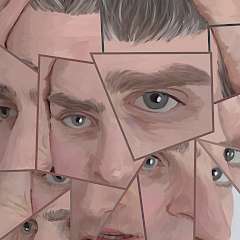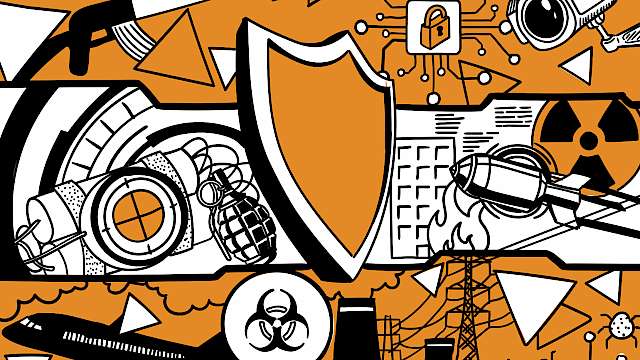The requests of Shamima Begum, Hoda Muthana, and Lisa Smith, who migrated to join the Islamic State (IS), to return to the UK, the US and Ireland respectively sparked widespread public debate. From a gendered perspective, these requests are significant. These three women demonstrated IS’s previous ability to appeal to a wide range of individuals, but perhaps more importantly, they embodied the variety of roles performed and the diversity of experiences had by women.
Consequently, women seeking to return from IS pose a range of challenges, and face challenges themselves, that the gendered nature of assumptions prevalent within both academia and policy practice unintentionally overlook. A broader understanding and a change in attitude towards women associated with VE groups are required to cultivate informed knowledge.
The role of women in IS
Female participation in IS is marked by the perceived inferiority of women to men. This is in part informed by how IS enforces its belief that men and women are fundamentally different, with strict gender boundaries informing ideology and practice.
Membership status is a key example of this. In contrast to men, women did not have to pledge allegiance, suggesting that membership status was denied to women. However, that said, the act of migration was instead considered an informal demonstration of a woman’s commitment to IS. Owing to the female-specific challenges faced when attempting to migrate and join IS, such as disobeying parents or travelling without a male guardian (mahram), migration was accepted in lieu of a pledge.
Furthermore, the apparent non-engagement in illegal activities while residing with IS fuels a perception that women have not contributed to the fulfilment of IS’s intended aims. Unlike male IS members, the majority of whom are assigned roles that are explicitly proscribed under terrorism laws such as combatant or propaganda producer, female IS members are assigned domestic roles.
These roles adhere to IS’s essentialist norms of femininity, with women primarily participating as wives and mothers. Bearing and raising children was crucial to IS’s state-building project that sought to establish their ‘Caliphal’ state. Supplementary roles such as recruitment; professional services including teaching, medicine or engineering; or involvement in the social police force (the al-Khansaa Brigade), may also have been performed alongside primary roles.
Acting as a wife or mother in association with or as a member of a proscribed group is as yet to be made illegal, hence the argument that women in IS just participated as wives and mothers. This reduces the roles performed by women to a conceptualisation of motherhood that is very different from the one held by IS.
To understand female participation more clearly, these roles need to be understood from IS’s perspective. For IS and its members, wives and mothers are integral to the continuation of IS’s existence. In addition to physically producing new members, mothers pass on IS ideology and grievances to their children, with the intention of indoctrinating them as future group members. Additionally, wives are expected to encourage their husbands to participate in jihad and obtain martyrdom.
Referring to female IS members as just wives and mothers diminishes the potential threat they could pose were they to return.
The sharing of IS ideology and grievances could theoretically continue to be performed once a woman has returned to the West. To dismiss female IS members as not dangerous on the basis that they did not perpetrate violence, and to fail to take seriously the potential threat women may pose as incubators of IS ideology, would be to misjudge the situation.
Challenge male normalcy of ‘the terrorist’
A more informed understanding of the relevance wives and mothers have for IS should be accompanied by a change in attitude towards female participation in VE.
Active participation in terrorism is conflated with, and often limited to, an individual’s use of violence, thereby discounting non-violent forms of participation as unimportant, despite the necessity of supporting roles in maintaining and sustaining a group. This implicitly genders actors of violent extremism as male, making it more difficult to understand female actors’ participation.
It should be acknowledged that although women rarely participate in violence, they do engage in activities that contribute to the functioning of VE groups.
Male normalcy and female exceptionality of ‘the terrorist’ could be challenged through ceasing to refer to female IS members as ‘jihadi brides’. This term negates female agency and perpetuates stereotypical narratives that further construct female terrorists as the exception. It implies that women who migrated to join IS from the West were ‘misled victims’; ‘unknowing’ or ‘lured’ and thereby diminishes responsibility for their actions. The prevalence of such perspectives, based upon stereotypical assumptions, impedes the development of a more accurate understanding.
Conclusion
The prevailing attitude which constructs women as the exception in VE combined with the failure to understand the importance of women to IS prevents an informed understanding of women who participated in IS activities. While former female members may not have undertaken traditionally defined terrorist activities, they did perform roles which contributed to sustaining and maintaining IS. In order to identify appropriate interventions and responses to returning women, the range of roles, experiences and motivations of these women needs to be understood.
The only way to conceive of women as actors with agency is to challenge feminised assumptions which exclude non-violent roles as forms of VE activity. Rather, female participation in both non-violent and violent roles should be viewed as indicative of women as VE actors. Responses to returning women should be carefully informed and proportionate to the activities each individual undertook.
Read more
- Paula Ruth Gilbert. 2002. ‘Discourses of Female Violence and Societal Gender Stereotypes’. Violence Against Women 8 (11): 1271–1300. Available at: http://bit.ly/2UbREak
- Judith Lorber. 1994. Paradoxes of Gender. New Haven: Yale University Press.
- Ester Strømmen. 2017. ‘Jihadi Brides or Female Foreign Fighters? Women in Da’esh – from Recruitment to Sentencing’. GPS Policy Brief. Oslo: Prio. Available at: http://bit.ly/30Gd81m
- Carol Tavris. 1993. The Mismeasure of Woman: Why Women Are Not the Better Sex, the Inferior Sex, or the Opposite Sex. New York: Touchstone.
Copyright Information
As part of CREST’s commitment to open access research, this text is available under a Creative Commons BY-NC-SA 4.0 licence. Please refer to our Copyright page for full details.








